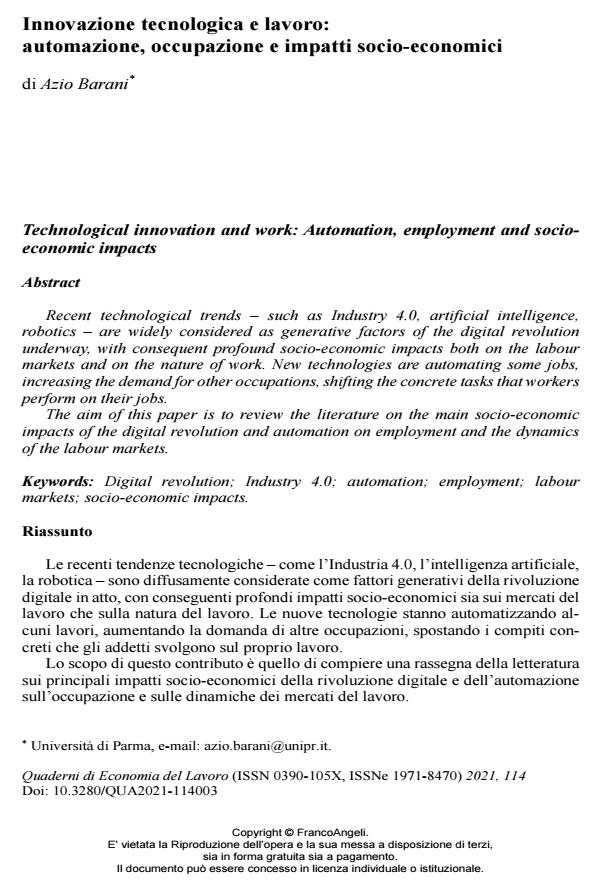Technological innovation and work: Automation, employment and socioeconomic impacts
Journal title QUADERNI DI ECONOMIA DEL LAVORO
Author/s Azio Barani
Publishing Year 2023 Issue 2021/114
Language Italian Pages 29 P. 51-79 File size 275 KB
DOI 10.3280/QUA2021-114003
DOI is like a bar code for intellectual property: to have more infomation
click here
Below, you can see the article first page
If you want to buy this article in PDF format, you can do it, following the instructions to buy download credits

FrancoAngeli is member of Publishers International Linking Association, Inc (PILA), a not-for-profit association which run the CrossRef service enabling links to and from online scholarly content.
Recent technological trends - such as Industry 4.0, artificial intelligence, robotics - are widely considered as generative factors of the digital revolution underway, with consequent profound socio-economic impacts both on the labour markets and on the nature of work. New technologies are automating some jobs, increasing the demand for other occupations, shifting the concrete tasks that workers perform on their jobs. The aim of this paper is to review the literature on the main socio-economic impacts of the digital revolution and automation on employment and the dynamics of the labour markets.
Keywords: Digital revolution; Industry 4.0; automation; employment; labour markets; socio-economic impacts.
Azio Barani, Innovazione tecnologica e lavoro: automazione, occupazione e impatti socio-economici in "QUADERNI DI ECONOMIA DEL LAVORO" 114/2021, pp 51-79, DOI: 10.3280/QUA2021-114003